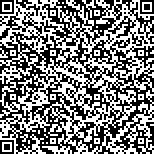| 引用本文: | 常鑫鑫,陈香茗,李倩,崔文华,薛紫鲸,许晴,郑玉光,宋军娜.基于指纹图谱结合网络药理学的知母质量标志物预测分析[J].中国现代应用药学,2023,40(5):603-612. |
| CHANG Xinxin,CHEN Xiangming,LI Qian,CUI Wenhua,XUE Zijing,XU Qing,ZHENG Yuguang,SONG Junna.Q-marker Prediction Analysis of Anemarrhenae Rhizoma Based on Fingerprint and Network Pharmacology[J].Chin J Mod Appl Pharm(中国现代应用药学),2023,40(5):603-612. |
|
| |
|
|
| 本文已被:浏览 1425次 下载 833次 |

码上扫一扫! |
|
|
| 基于指纹图谱结合网络药理学的知母质量标志物预测分析 |
|
常鑫鑫1, 陈香茗1, 李倩1, 崔文华1, 薛紫鲸1, 许晴1, 郑玉光2, 宋军娜1
|
|
1.河北中医学院药学院/河北省中药炮制技术创新中心, 河北 石家庄 050200;2.河北化工医药职业技术学院, 河北 石家庄 050026
|
|
| 摘要: |
| 目的 基于指纹图谱及化学计量法综合分析不同产地知母质量差异,根据质量标志物的理论依据,进一步结合网络药理学对知母质量标志物进行预测分析。方法 采用HPLC建立6个产地20批知母药材的指纹图谱,对其进行相似度评价,结合聚类分析(hierarchical cluster analysis,HCA)、主成分分析(principal component analysis,PCA)及正交偏最小二乘法判别分析(orthogonal partial least squares discriminant analysis,OPLS-DA)筛选组间主要差异成分;基于质量标志物“五原则”,对差异性成分进行分析,进一步利用网络药理学方法筛选知母药材成分的相关靶点和通路,构建“成分-靶点-通路”网络图,预测知母药材的质量标志物。结果 建立了20批知母药材的指纹图谱,标定10个共有峰,共指认出7个共有峰,分别为新芒果苷、芒果苷、异芒果苷、知母皂苷BⅡ、知母皂苷BⅢ、知母皂苷Ⅰ、知母皂苷AⅢ,相似度均>0.934。HCA、PCA和OPLS-DA将20批样品分为2类,河北、内蒙古为一类,山西、安徽、陕西、山东为一类。OPLS-DA筛选出新芒果苷、芒果苷、知母皂苷AⅢ为不同产地知母药材的差异性成分。运用网络药理学分析预测芒果苷、知母皂苷BⅡ、知母皂苷AⅢ可能通过NFKB1、TNF、PPP1CC、IL1B、ATP1A3、ATP1A2、ATP1A1等靶点,调控神经活动配体-受体相互作用、缝隙连接、钙信号通路、cAMP信号通路、cGMP-PKG信号通路发挥治疗神经系统疾病、心脑血管疾病和癌症的作用。结合质量标志物理论分析,芒果苷、知母皂苷BⅡ、知母皂苷AⅢ可作为知母药材潜在的质量标志物。结论 建立的知母药材指纹图谱能够直观反映出不同产地知母化学成分信息,结合网络药理学筛选出芒果苷、知母皂苷BⅡ、知母皂苷AⅢ 3个化学成分可作为知母的质量标志物。 |
| 关键词: 知母 质量标志物 指纹图谱 多成分定量 网络药理学 芒果苷 知母皂苷BⅡ 知母皂苷AⅢ |
| DOI:10.13748/j.cnki.issn1007-7693.20213190 |
| 分类号:R285.5 |
| 基金项目:国家自然科学基金项目(81803762);河北省自然科学基金项目(H2022423317);河北省高校百名优秀创新人才支持计划项目(SLRC2019044);河北省高层次人才资助项目(A201901037);河北中医学院大学生创新创业训练项目(202114432146) |
|
| Q-marker Prediction Analysis of Anemarrhenae Rhizoma Based on Fingerprint and Network Pharmacology |
|
CHANG Xinxin1, CHEN Xiangming1, LI Qian1, CUI Wenhua1, XUE Zijing1, XU Qing1, ZHENG Yuguang2, SONG Junna1
|
|
1.College of Pharmacy, Hebei Traditional Chinese Medicine Processing Technology Innovation Center, Hebei University of Chinese Medicine, Shijiazhuang 050200, China;2.Hebei Chemical and Pharmaceutical College, Shijiazhuang 050026, China
|
| Abstract: |
| OBJECTIVE To analyze the quality differences of Anemarrhenae Rhizoma from different areas based on the fingerprint and chemometrics, according to the theoretical basis of the quality marker(Q-Marker) of traditional Chinese medicine, and further combined with network pharmacology, the preliminary prediction analysis of the Q-Marker of Anemarrhenae Rhizoma decoction. METHODS HPLC was used to establish the fingerprints of 20 batches of Anemarrhenae Rhizoma from 6 areas and evaluate their similarity. At the same time, hierarchical cluster analysis(HCA), principal component analysis(PCA) and orthogonal partial least squares discriminant analysis(OPLS-DA) were used to screen the main difference components between the groups. Based on the “five principles” of Q-Marker, analyze the different components, and further through the network pharmacology to screen the relevant targets and pathways of the ingredients of Anemarrhenae Rhizoma, construct a “component-target-pathway” network diagram, and predict Anemarrhenae Rhizoma Q-Marker. RESULTS The fingerprint of 20 batches of Anemarrhenae Rhizoma materials were established, 10 common peaks were calibrated, and 7 common peaks were identified, namely, neomangiferin, mangiferin, isomangiferin, timosaponin BⅡ, timosaponin BⅢ, timosaponin Ⅰ, timosaponin AⅢ. Their similarity was >0.934. Twenty batches of samples were clustered into two groups by HCA, PCA and OPLS-DA. Hebei and Inner Mongolia as one category. Shaanxi, Anhui, Shanxi and Shandong as one category. The OPLS-DA screened out neomangiferin, mangiferin, timosaponin AⅢ as the main marker components for the differences of Anemarrhenae Rhizoma. Using network pharmacology analysis to predict that mangiferin, timosaponin BⅡ, timosaponin AⅢ may regulate neural activity ligand-receptor interactions, gap junctions, calcium signaling pathway, cAMP signaling pathway, and cGMP-PKG signaling pathway through NFKB1, TNF, PPP1CC, IL1B, ATP1A3, ATP1A2, ATP1A1 and other targets, played a role in the treatment of neurological diseases, cardiovascular, cerebrovascular diseases and cancer. Combined with Q-Marker theoretical analysis, mangiferin, timosaponin BⅡ, timosaponin AⅢ could be used as potential Q-Markers in Anemarrhenae Rhizoma. CONCLUSION The established fingerprint of Anemarrhenae Rhizoma can directly reflect the chemical composition information of Anemarrhenae Rhizoma from different areas. Combining with network pharmacology, the three chemical components of mangiferin, timosaponin BⅡ, timosaponin AⅢ can be used as the Q-Marker of Anemarrhenae Rhizoma. |
| Key words: Anemarrhenae Rhizoma quality marker(Q-marker) fingerprints multi-components determination network pharmacology mangiferin timosaponin BⅡ timosaponin AⅢ |
|
|
|
|
